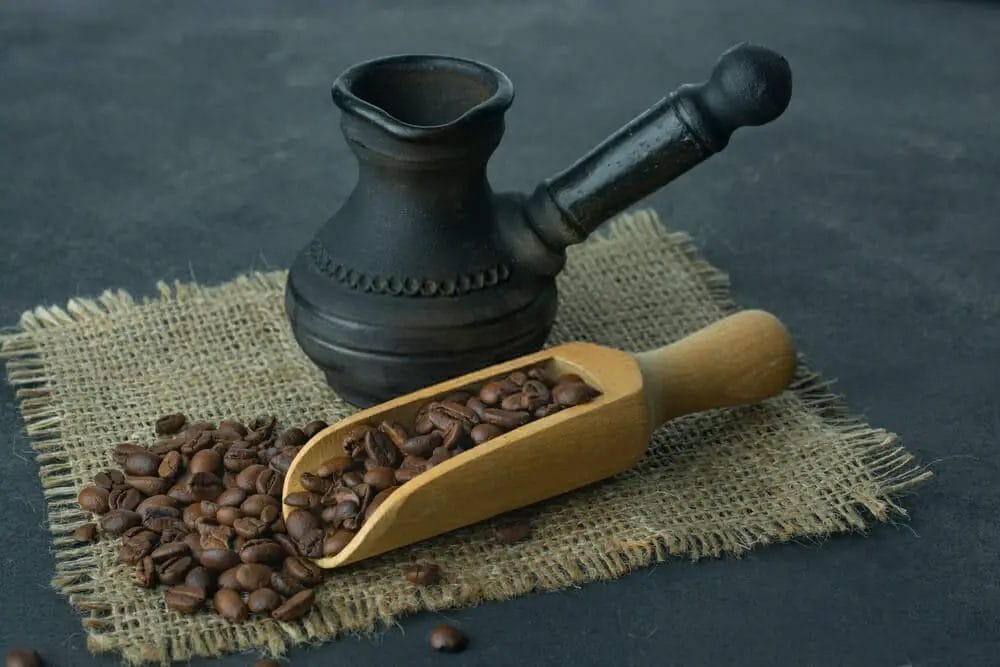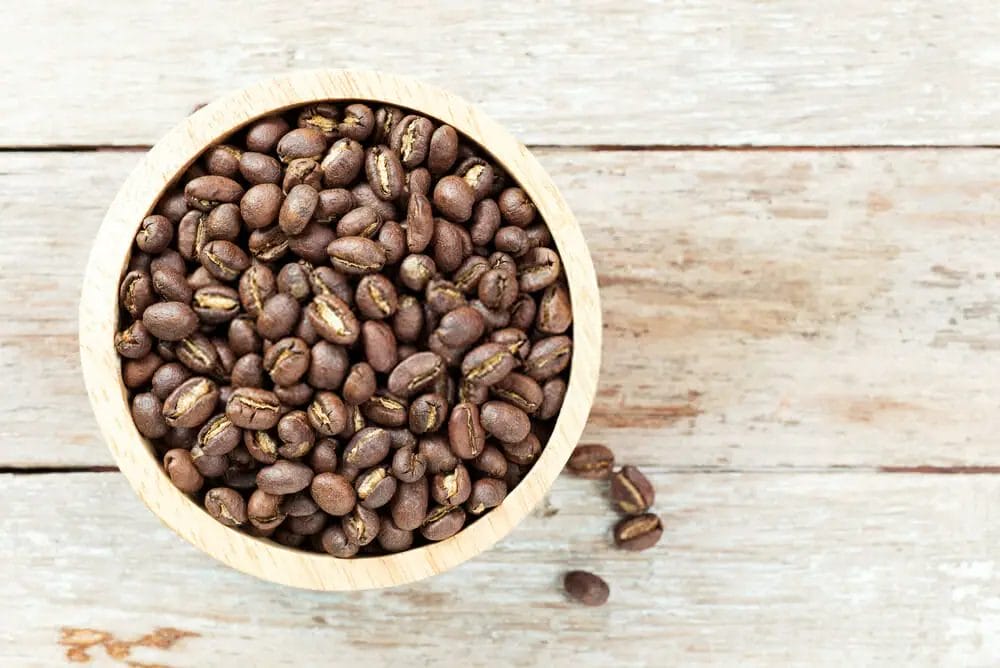The Battle of the Beans: Which is Better – Peaberry or Regular?

Get ready to embark on a flavorful journey as we delve into the intriguing disparities between Peaberry and Regular coffee beans.
We will explore their unique characteristics, from the tantalizing flavors and exceptional quality to the intricate cultivation methods employed.
For coffee enthusiasts around the world, achieving the perfect blend is a never-ending quest.
This is because every type of coffee bean has its unique characteristics that affect the taste and aroma of the final product.
Two popular types of coffee beans are Peaberry and Regular (also called Flatberry).
While both are derived from the same plant species (Coffea arabica), they differ in several ways.
Peaberry beans are smaller than regular beans and have a round shape instead of two flat sides.
They occur when one seed develops inside a cherry instead of two seeds. Despite being less common than regular beans, Peaberry has gained popularity among specialty coffee roasters due to their distinct flavor profile.
In contrast, Regular beans have an uneven shape with one flat side and one rounded side.
Roasting techniques differ for each type of bean to bring out their best qualities.
Additionally, while there are health benefits associated with consuming regular coffee beans like reducing liver cancer risk or lowering depression rates, peaberry also has its own set of advantages such as higher density which contributes to better tasting brews.
Key Takeaways
- Peaberry is considered a luxury offering due to its rarity and unique flavor profile compared to regular coffee beans.
- The pricing and availability of Peaberry is generally higher than regular coffee due to its special cultivation methods and market demand.
- Factors such as roast level, brewing techniques, and personal preference can greatly affect the taste and quality of both Peaberry and regular coffee beans.
- Experimentation is key in finding the perfect brew, whether using Peaberry or regular coffee beans.
Key Features Between Peaberry Coffee Beans and Regular Coffee Beans
| Feature | Peaberry Coffee Beans | Regular Coffee Beans |
|---|---|---|
| Shape | Round | Flat |
| Size | 5-7mm | 7-10mm |
| Density | 0.8-0.9g/cm3 | 0.7-0.8g/cm3 |
| Roasting | Roasts more evenly | Roasts less evenly |
| Flavor | Sweeter, more balanced flavor | More acidic, more bitter flavor |
| Caffeine Content | Higher caffeine content (1.3%-1.5%) | Lower caffeine content (1.1%-1.2%) |
| Price | More expensive | Less expensive |
| Availability | Less available | More available |
| Yield | Higher yield (15%-20%) | Lower yield (10%-15%) |
| Consistency | More consistent | Less consistent |
| Appearance | More uniform | Less uniform |
| Texture | Smoother | More grainy |
| Aroma | Stronger | Weaker |
| Aftertaste | Longer-lasting | Shorter-lasting |
Unveiling the Contenders: Peaberry Vs Regular Coffee Beans

When examining the physical characteristics of coffee beans, one may notice a distinct difference in shape that can greatly impact the resulting flavor profile.
Regular coffee beans are known for their iconic oval shape with a crease running down the middle.
On the other hand, Peaberry beans possess a rounder and smaller shape due to being formed from only one seed instead of two.
This genetic variation occurs in approximately 5% of all coffee cherries and is caused by an anomaly during pollination.
The rarity of Peaberry beans has led to them being held in high esteem within the world of coffee.
Due to their unique shape, they require different processing, roasting techniques, and brewing methods than regular coffee beans.
The Peaberry processing involves manually sorting out individual Peaberries from regular batches and drying them separately.
Roasters must also adjust their roasting profiles as these small beans tend to roast faster than traditional ones.
When brewed correctly through specialized brewing methods such as pour-over or French press, Peaberry coffee boasts a bright acidity and complex flavors that make it highly sought after among coffee enthusiasts.
The Journey from Crop to Cup
From the moment coffee cherries are picked from their trees, a complex journey begins that involves several stages of processing before the beans can be roasted and brewed into a delicious cup of coffee.
Both Peaberry and Regular beans undergo similar processes, but the former’s unique shape may lead to a more uniform roast, further contributing to their distinct flavor profile.
Coffee farming techniques vary depending on the region and climate where they are grown.
Once picked, the cherries are typically processed through either a wet or dry method, which involves removing the outer layers of fruit to reveal the beans inside.
The beans are then sorted by size and quality before being shipped off for roasting.
Roasting methods play an important role in determining the taste and aroma of coffee; different temperatures and times produce different levels of acidity and bitterness.
Finally, brewing equipment such as espresso machines or drip coffee makers can also affect flavor by controlling factors like temperature and water pressure during extraction.
Influence of Geography

Geography plays a significant role in shaping the characteristics of coffee, with factors such as altitude, climate, and soil composition influencing the flavor profile and acidity of the beans.
Coffee grown at higher elevations tends to have a more complex flavor profile with higher acidity due to cooler temperatures and slower maturation.
In contrast, coffee grown at lower altitudes tends to be less acidic with a heavier body, as warmer temperatures accelerate maturation.
Climate variations also affect the taste of coffee beans. For instance, regions that experience distinct wet and dry seasons tend to produce coffee with more pronounced fruity notes due to increased sugar content caused by dehydration during dry periods.
Soil quality is also a key factor in determining the characteristics of coffee beans. Coffee plants thrive in well-drained soils rich in organic matter because it encourages root development and nutrient uptake.
Countries like Tanzania are renowned for their peaberry beans due to unique terroirs that impart exceptional flavors such as citrus-like acidity or bold chocolate notes into each cup.
Colombia’s diverse geography means that several microclimates exist within its borders, giving rise to unique flavor profiles among its different regions’ coffees.
Costa Rica’s volcanic soils provide an ideal environment for growing specialty-grade coffees known for their bright acidity and clean finish.
The Flavor Debate: Peaberry Vs Regular
The distinction between the flavor profiles of Peaberry and Regular coffee beans is a topic of ongoing debate among coffee enthusiasts.
Peaberry beans are characterized by their round shape, which forms when only one seed develops within the coffee cherry instead of two.
This unique growth pattern contributes to a more concentrated, well-rounded taste that some consumers prefer.
On the other hand, Regular beans may present a broader range of tasting notes and sometimes a more balanced overall experience.
Ultimately, consumer preferences dictate which type of bean they prefer, but it’s important to understand the factors that contribute to these differences.
One factor is the size and shape of Peaberry beans versus Regular beans. The smaller size and round shape of Peaberry beans can lead to a different roasting process that emphasizes their unique flavors.
Additionally, geography plays a role in determining flavor profiles as soil composition and climate can affect how coffee beans grow and develop taste characteristics.
Regardless of personal preference or geographic location, understanding the nuances between Peaberry and Regular coffee can enhance one’s appreciation for this beloved beverage.
The Art of Coffee: Peaberry Vs Regular
The world of coffee has evolved into an art form, with specialty coffee houses treating Peaberry beans as a luxury offering.
These unique beans are harvested from the rare occurrence where only one bean grows inside the coffee cherry, instead of the usual two.
Because of this, Peaberry farming is more labor-intensive and less common than regular coffee bean farming.
However, it is well worth the effort for many because these beans have a distinct flavor profile that is highly sought after by coffee connoisseurs.
Specialty coffee houses use various brewing techniques to highlight the attributes of both types of beans.
For instance, some brew methods such as pour-over or siphon brewing bring out the bright acidity and complex flavors in regular beans while others like espresso or Aeropress emphasize Peaberry’s sweeter notes and fuller body.
Ultimately, taste preferences differ depending on individual palates.
Therefore, both types of beans play an important role in creating a diverse range of flavors for discerning coffee lovers everywhere.
Economics of Coffee Beans: Peaberry Vs Regular
Economically speaking, the pricing of specialty coffee beans such as Peaberry and Regular is influenced by a variety of factors.
One major factor is rarity. Peaberry beans are considered rare because they come from a singular bean in the coffee cherry instead of two halves like regular beans.
This makes up only 5-10% of all coffee beans harvested. The production process also affects pricing as it can be more labor-intensive to separate Peaberry beans from their counterparts during processing.
As for market demand, consumer preferences play a significant role in determining the price differences between these two types of beans.
Due to the rarity and unique flavor profile often associated with Peaberry coffee, it is typically priced higher than Regular coffee.
While this may impact consumers’ ability or willingness to purchase Peaberry coffee, some people are willing to pay extra for its distinct taste and perceived value.
On the other hand, many coffee shops choose not to offer Peaberry due to its higher cost and limited availability compared to Regular coffee which can lead them to lose potential customers who prefer this type of specialty brew.
In conclusion, while market demand ultimately determines the price differences between these two types of beans, factors such as rarity and production processes contribute significantly to their overall value in the eyes of both producers and consumers alike.
The Perfect Brew: Peaberry Vs Regular

Brewing recommendations and techniques play a significant role in enhancing the unique flavor profiles of specialty coffee beans.
The preparation method can help showcase the distinct characteristics of Peaberry and Regular beans, creating an unforgettable coffee experience.
Here are three brewing techniques that can bring out the best in both types of beans:
- Pour-over: This method involves pouring hot water over ground coffee placed in a filter cone. It allows for better control over the water-to-coffee ratio, resulting in a more balanced cup with pronounced acidity and clarity of flavor.
- Aeropress: The Aeropress is known for producing a clean, smooth cup without any bitterness or sediment. It works well with both Peaberry and Regular beans, as it extracts all the flavors from the grounds while minimizing their contact time with water.
- French press: This classic brewing method allows for full immersion of the coffee grounds, resulting in a robust and rich cup with bold notes of chocolate or caramel. It’s ideal for those who prefer more body and depth in their coffee.
It’s important to note that brewing techniques should be complemented by appropriate roasting methods and taste preferences to bring out the best qualities in each type of bean.
Experimentation is key when it comes to finding your perfect brew!
The Blind Taste Test Challenge
By participating in a blind taste test, coffee enthusiasts can embark on an unbiased exploration of the subtle nuances between two distinct variations of this beloved beverage.
These tests involve serving participants two cups of coffee, one containing peaberry beans and the other containing regular beans, without revealing which is which.
The participants are then asked to taste and compare the flavors of each cup before choosing their preferred option.
Blind taste tests are particularly useful for understanding flavor perception and consumer preference.
By removing any biases or preconceived notions about certain types of coffee beans, individuals can truly appreciate the differences between peaberry and regular varieties.
This type of testing also allows for a personal exploration and discovery of one’s own palate preferences, leading to a more meaningful and enjoyable coffee drinking experience.
FAQS
Conclusion
In conclusion, after comparing and analyzing the differences between peaberry and regular coffee beans, it is clear that both have their own unique pros and cons.
Peaberry beans are known for their distinct flavor profile, which is often described as more complex and fruity than regular coffee beans. However, they are also more expensive due to their rarity and require special cultivation methods.
On the other hand, regular coffee beans are widely available and less expensive than peaberry beans.
While they may not have the same level of complexity in flavor as peaberry beans, they still offer a delicious cup of coffee with a range of flavors depending on the region where they were grown.
Ultimately, the final verdict comes down to personal preference and taste. Exploring different types of coffee can lead to a deeper appreciation for this beloved beverage and enhance one’s overall drinking experience.






